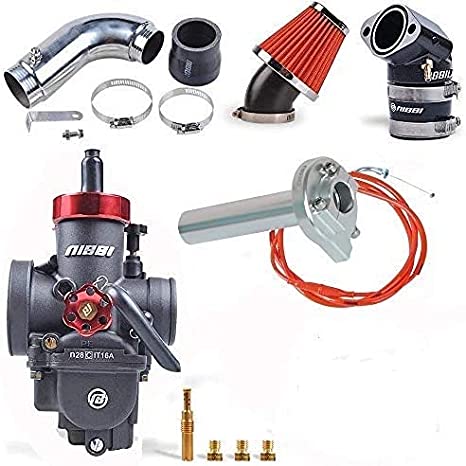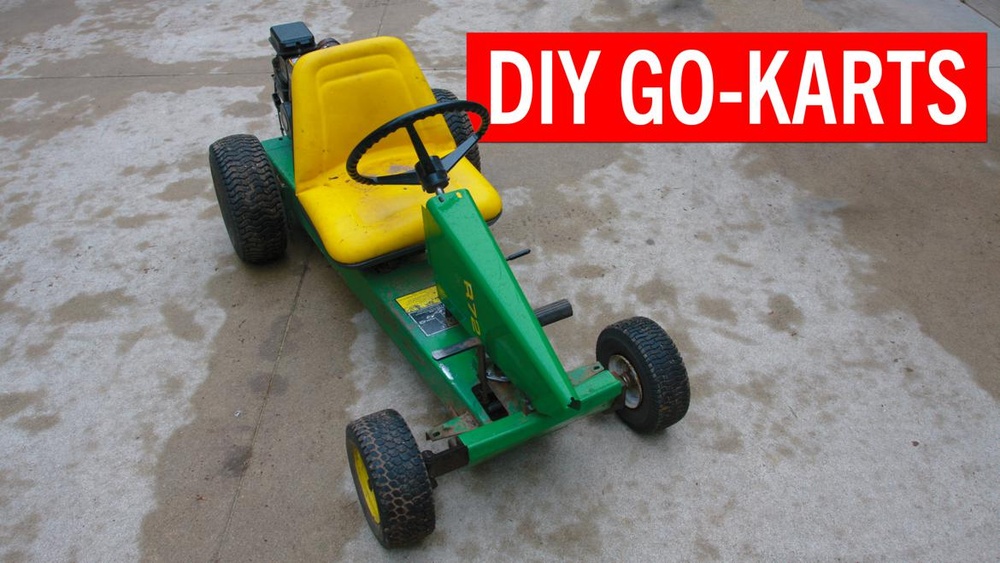As an Amazon Associate, I earn from qualifying purchases.
Have you ever wondered just how fast a lawn mower engine can really go? Whether you’re curious about the speed of your own mower or dreaming of turning it into a high-speed machine, you’re about to discover some surprising facts.
From typical speeds to jaw-dropping custom modifications, this article will take you on a thrilling ride through the world of lawn mower engines. Stick with us, and you’ll learn how fast these engines can run, what limits their speed, and even how some enthusiasts have pushed the boundaries.
Ready to rev up your knowledge? Let’s dive in!
Lawn Mower Engine Speeds
Lawn mower engine speeds vary depending on the model and purpose. Understanding these speeds helps choose the right mower for your lawn size and type. Engine speed affects cutting efficiency and mower performance. Lawn mower engines typically run at steady speeds for consistent cutting results.
Typical Rpm Ranges
Most lawn mower engines operate between 2,800 and 3,600 RPM (revolutions per minute). Small push mowers usually run near 3,000 RPM. Larger riding mowers often reach up to 3,600 RPM. This range balances power and fuel efficiency. Maintaining proper RPM ensures smooth blade rotation and clean cuts.
Speed Differences By Mower Type
Push mowers have lower engine speeds compared to riding mowers. Zero-turn mowers often run at higher RPMs for quick maneuvering. Gas-powered mowers tend to have faster engines than electric ones. Riding mowers cover more ground with steady, higher speeds. Choosing the right mower type depends on lawn size and terrain.

Top Speeds Of Riding Mowers
Riding mowers offer more than just comfort and ease for lawn care. They also come with varying speeds that affect how quickly you can finish mowing. Understanding their top speeds helps you choose the right mower for your needs. Some models are built for speed, while others focus on control and precision.
Average Riding Mower Speed
Most standard riding mowers reach speeds between 4 and 6 miles per hour. This speed is ideal for regular lawn maintenance. It balances safety and efficiency, allowing smooth handling on most terrains. These mowers are perfect for medium to large yards without rushing the job. Their engines usually deliver enough power to maintain steady speeds without strain.
Zero-turn Mower Speeds
Zero-turn mowers are faster and more agile than typical riding mowers. They often reach speeds of 7 to 10 miles per hour. Their design allows sharp turns and quick movement around obstacles. This makes them popular for complex lawns with many trees or flower beds. Many zero-turn models also offer adjustable speed controls to match user comfort and lawn conditions.
Modified Lawn Mower Speeds
Many lawn mower enthusiasts enjoy boosting their mower’s speed. Modifications let these machines go far beyond normal limits. Adjustments and custom builds turn ordinary mowers into fast, thrilling rides. These changes often focus on the engine and drive system.
Speed upgrades make mowing more exciting. Some racers even compete in lawn mower racing events. These machines reach speeds that surprise most people. Below, learn about common modifications that increase mower speed.
Pulley Adjustments
Changing the pulley size affects mower speed directly. Smaller pulleys on the engine or larger ones on the wheels increase top speed. This alters the gear ratio, letting the engine spin the wheels faster.
Many speed mods start by swapping pulleys. It is an easy and affordable way to boost speed. But too much change can strain the engine or reduce torque. Balance is key to keeping the mower safe and fast.
Custom-built Racing Mowers
Some mowers are built from scratch for racing. These custom machines use powerful engines and lightweight parts. Builders focus on speed, control, and safety.
Racing mowers can reach speeds over 50 mph. They often feature reinforced frames and upgraded brakes. Electric motors or high-performance gas engines power these machines. Racing mowers show how far lawn mower speed can go.

Record-breaking Lawn Mowers
Lawn mowers usually move slowly to cut grass evenly. Some special lawn mowers break speed records. These machines combine power and speed in a unique way. They prove that lawn mowers can be fast and fun.
These mowers are designed not just for cutting grass but also for racing. They show how engineering can push limits in unexpected areas. Their speeds amaze many lawn care fans and racing enthusiasts alike.
Honda Mean Mower Highlights
The Honda Mean Mower is a famous speed record holder. It uses a powerful V-twin engine from a sports motorcycle. The engine produces over 200 horsepower. This mower still cuts grass while reaching high speeds.
Its frame is lightweight but strong. The team added electric motors to control the blades. This setup allows the mower to race without losing its cutting ability. It is a perfect blend of speed and function.
Fastest Lawn Mower Acceleration
The Honda Mean Mower accelerates from zero to 60 mph in just under 5 seconds. This acceleration is faster than many sports cars. The mower’s design focuses on speed and stability.
Sharp steering and wide tires help keep control at high speeds. The acceleration thrill excites both riders and spectators. This record shows lawn mowers can be surprisingly fast.
Lawn Mower Racing Culture
The lawn mower racing culture brings excitement to a surprising sport. It transforms everyday lawn mowers into fast, thrilling machines. Fans and racers gather to enjoy speed and skill on the track. This community combines creativity, competition, and fun in a unique way.
Racing enthusiasts modify engines to boost mower speed. They focus on safety and performance. Events often attract large crowds who cheer for their favorite racers. This culture shows how simple machines can become powerful racers.
Racing Associations
Many lawn mower racing groups organize official competitions. These associations set rules for safety and fairness. They provide support for new and experienced racers. Examples include the New England Lawn Mower Racing Association and the British Lawn Mower Racing Association. They help keep the sport organized and growing.
Popular Racing Events
Events like the Lawn Mower Grand Prix draw many participants. Local clubs also host regular races in communities. These events feature different race classes based on mower types and modifications. Some races last for several laps, while others focus on speed trials. Fans enjoy the energy and close competition at each event.
Speed Vs. Safety
Balancing speed and safety is key when operating a lawn mower engine. Fast engines can make mowing quicker. Yet, higher speeds increase risks for the operator and others nearby. Understanding the safety limits helps prevent accidents and injuries.
Choosing the right speed ensures efficient mowing without losing control. Safety measures protect you from hazards caused by flying debris or machine instability. Always prioritize safe operation over trying to mow faster.
Mowing Projectiles Risks
High-speed blades can turn small objects into dangerous projectiles. Rocks, sticks, and other debris can fly out at high speeds. These flying objects can injure the operator or bystanders. Damage to property is also possible. Clearing the lawn of debris before mowing reduces this risk. Wearing protective gear is important to shield yourself from flying particles.
Safe Speed Limits
Most lawn mower engines operate safely between 3 to 5 mph. Riding mowers usually have a top speed of 5 to 8 mph. Zero-turn mowers can reach speeds near 10 mph but require skill to control. Exceeding recommended speeds can lead to loss of control. Always follow manufacturer guidelines for speed limits. Slow down on uneven or sloped terrain to maintain stability.
Diy Speed Upgrades
Speeding up a lawn mower engine can be a fun and rewarding project. Many enthusiasts enjoy tuning their machines to boost power and performance. Simple upgrades can make your mower run faster and cut more efficiently. This section explores easy DIY speed upgrades anyone can try at home.
Engine Modifications
One way to increase speed is by modifying the engine itself. Replacing the stock carburetor with a high-performance model helps the engine breathe better. This change allows more fuel and air to mix, creating more power.
Changing the spark plug to a high-quality one improves combustion. Better combustion means the engine runs stronger and faster. You can also adjust the governor, which limits engine speed. Loosening or removing the governor lets the engine reach higher RPMs.
Upgrading the air filter to a less restrictive type allows more air flow. More air means more power. These engine tweaks work best on small, single-cylinder engines common in lawn mowers.
Performance Enhancements
Performance parts offer another path to speed. Installing a performance exhaust system reduces back pressure. This lets exhaust gases exit faster, helping the engine run freer and faster.
Changing the mower’s drive belt or pulleys affects speed too. Using a smaller pulley on the engine or a larger one on the wheels increases top speed. This simple swap can make a big difference.
Upgrading to synthetic oil reduces engine friction. Less friction means the engine spins more easily and quickly. Also, keeping blades sharp ensures smooth operation and less strain on the motor.

Speed Comparisons
Lawn mower engines have a wide range of speeds. Some move slowly for careful grass cutting. Others can go surprisingly fast. Comparing these speeds helps us understand their capabilities better.
Speed depends on mower type, engine size, and purpose. Let’s compare lawn mowers to other vehicles and see how commercial mowers differ from custom models.
Lawn Mowers Vs. Other Vehicles
Most lawn mowers travel between 3 and 5 miles per hour. This speed suits grass cutting and safety. Riding lawn mowers can reach up to 8 mph. This is faster but still slower than cars or motorcycles.
Cars typically move at 60 mph or more on roads. Motorcycles can exceed 100 mph easily. Even golf carts, which are small vehicles, usually go around 15 mph. Lawn mowers remain much slower to avoid accidents and damage.
Commercial Vs. Custom Mowers
Commercial lawn mowers focus on durability and efficiency. Their top speed ranges from 7 to 12 mph. These speeds help cover large areas quickly while maintaining control.
Custom mowers, often built for racing or fun, can go much faster. Some modified models reach speeds above 50 mph. These mowers use powerful engines and special parts. They still need to cut grass but prioritize speed and performance.
Racing lawn mowers show how engine speed can be pushed beyond typical limits. They blend lawn care with excitement and skill.
Frequently Asked Questions
How Fast Can A Lawn Mower Go?
A typical riding lawn mower can reach speeds of 5 to 8 mph. Zero-turn mowers often go up to 10 mph. Modified or racing mowers can exceed 60 mph. Standard push mowers move slower, around 3 mph. Speed varies by mower type and engine power.
How Fast Can A Lawn Mower Engine Go Kart Go?
A lawn mower engine go-kart can typically reach speeds between 20 and 40 mph. Modified versions may go faster.
What Is The Fastest Lawn Mower Engine?
The fastest lawn mower engine belongs to the Honda Mean Mower, reaching speeds over 100 mph. It combines power with grass-cutting ability.
How Fast Can A Lawn Mower Threw A Rock?
A lawn mower can throw a rock at speeds up to 90 mph. This depends on blade speed and mower type. Always wear safety gear to prevent injury.
Conclusion
Lawn mower engine speeds vary by type and modifications. Most standard mowers run between 3,000 to 3,600 RPM. High-performance and custom mowers can reach much higher speeds. Speed affects mowing time but not always cutting quality. Safety matters more than speed when using a mower.
Understanding engine speed helps you choose the right mower. Keep your mower well-maintained for the best performance. Now you know how fast a lawn mower engine can go!

